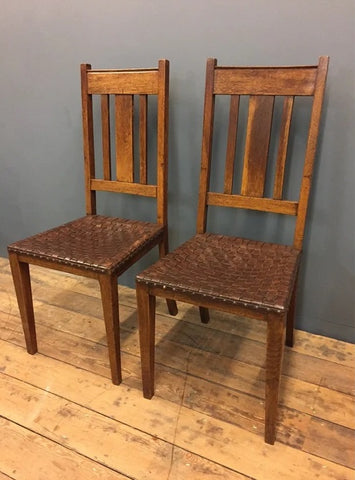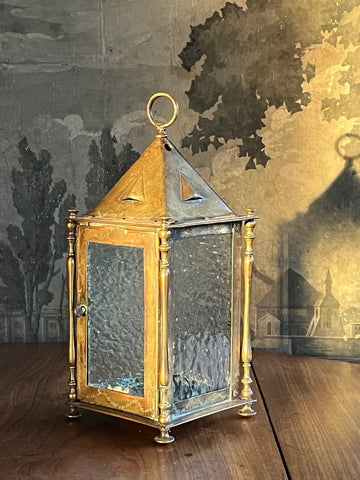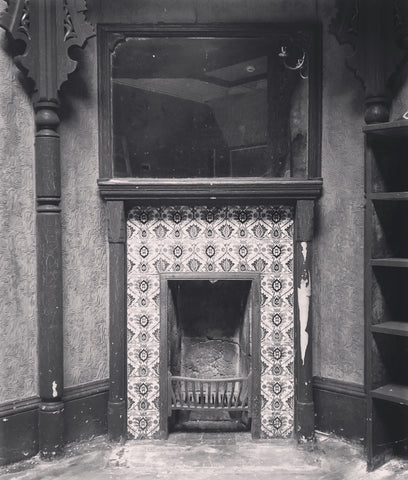The Arts & Crafts, a Lake District Movement
The Arts & Crafts Movement of the late 19th century was perhaps one of the most influential movements in British history. At its core was a simple philosophy advocating major social reform, in light of the loss of the traditional. This was a tacit rejection of the modern excesses of the industrial revolution in favour of the revival of traditional crafts and aesthetics.
There is no doubt that its impact was incredibly far reaching, influencing everything from architecture to painting, enamelling to ceramics, leatherwork to lacemaking, and continues to influence craftsmen to this day including The Rusland Movement in the Lake District.
The first to write about this, and to engage with how to make a meaningful change, was Augustus Welby Northmore Pugin, who in his work Contrast: Or a Parallel between the Noble Edifices of the Fourteenth and Fifteenth Centuries and Similar Buildings of the Present Day, Shewing the Present Decay of Taste, published in 1836, was a powerful diatribe against the architectural and social tendencies of the 19th century compared the peace and harmony of the medieval. He essentially made the crucial connection between art and society, equating bad art and architecture with a corrupt and diseased society.
The movement gained further traction as discontent with industrialisation and the quality of all that it produced began to grow. Highlighted in particular by the Great Exhibition of 1851, which saw discussion begin in earnest surrounding the poor quality of objects produced by mechanised means.
In 1851, art critic and writer John Ruskin published his seminal three-volume treatise The Stones of Venice, in volume two in the chapter ‘The Nature of the Gothic’, he presents his views on how society should be organised.
Essentially Ruskin was attacking the division of labour between thinker and worker under the auspices of industrial capitalism, and the identical, soulless, and inhuman goods produced through its repetitive labour. Ruskin’s ultimate wish was to unification of mind, body and spirit in a new breed of craftsman, elevated to the status of artisan.

These ideas were hugely influential to many of Ruskin’s pupils’ including designer and social activist William Morris. Forging links with the Pre-Raphaelite Brotherhood while at Oxford in the 1850s, Morris was drawn to medieval history and architecture, fostering a romantic vision of a pre-Industrial world where master craftsmen were both designers and manufacturers of their work.
Morris adopted this idea and together with Dante Gabriel Rossetti, Edmund Burne-Jones, and Philip Webb, set up a decorative arts company, researching and mastering pre-factory methods of production, rejecting the mass pollution of the industrial age, preferring to work hands-on in a range of disciplines including furniture, stained glass, textiles, metal work, cabinet making and furniture making, glassware and tapestry.
Contemporary architects and designers such as Edwin Lutyens, Philip Webb, C.F.A. Voysey, Mackay Hugh Baillie Scott and William Burges responded creatively to these changes, crafting some of the most beautiful buildings and objects. Two particularly stunning examples of which can be found in the Lake District, Blackwell by Baillie Scott and Broad Leys by Vosey.
By the 1880s, Morris was a renowned figure, his designs the height of fashion, and the wider Arts & Crafts Movement was born. Between the late 19th and early 20th centuries, 130 Arts & Crafts guilds, associations, and communities were founded, while Liberty & Co dealt in goods favoured by the style, nurturing commercial relationships with its artists.

Although the Arts & Crafts movement evolved in urban settings, it was firmly centred on the notion of rural tradition, inevitably many of its artisans literally took this to heart, with many leaving cities to establish new ways of living and working, with workshops set up across the UK, with many of the locations chosen, including the Lake District providing picturesque landscapes, pre-existing communities of accomplished artisans and, perhaps more importantly, direct access to a host of rich patrons whom themselves were escaping urban excess.
Ultimately this meant Arts & Crafts makers based in rural communities revived artisan traditions and also created employment for local people. This ultimately meant that as a movement is stayed the course longer in the countryside than in the city, and as a result had a far greater impact on the rural economy compared to its urban cousin.
One such maker was close friend and collaborator of William Morris, Philip Webb, who in his own right was a hugely talented designer, who not only conceived buildings and beautiful furniture but also ceramics, tiles, stained glass, tapestry and wallpaper, a fine local example of his work can be found in the form of St Martin’s Church, Brampton, which also has stained glass windows designed by Edward Burne-Jones.
Philip Webb was without doubt one of the Arts & Crafts Movement's most original designers. Trained as an architect, he became a junior assistant in the offices of George Edmund Street, a leading exponent of the Gothic Revival movement. It was here that in 1856 he met William Morris, who had joined Street's firm as a trainee. By 1858 Webb had established his own architectural practice, and by 1859 had designed his first house: Red House in Bexleyheath in Kent, which Morris commissioned for himself and his wife.
Morris, Webb and others in their circle took great pleasure in working together on Red House, this led in 1861 to them establishing their interior decorating company, Morris, Marshall, Faulkner & Co., with Webb working as the firm’s lead designer.
In recent years we’ve been fortunate to be asked to source an 18th century oak dresser for the servants hall at Brantwood. The model we found fits perfectly with the aesthetic of the house and is a functional piece of vernacular furniture.

Examples of other items from this period that we've sourced include a cast iron tiled fire insert with four seasons tiles by Kate Greenaway, which we salvaged from a house on the West Coast.
No expense was spared when redecorating the house in the 19th century, utilising the best materials and most fashionable designers of the day; with embossed Morris wallpaper, William de Morgan tiles and fine stained glass by a number of makers.
We were also fortunate in being able to salvage the entire octagonal room interior which housed the same fireplace, originally this space would have functioned as both a smoking room and library, where the gentlemen would gather after dinner to enjoy a cigar and a libation or two.
To view our current Arts & Crafts stock please visit: https://yewtreebarn.co.uk/collections/wrs


Leave a comment